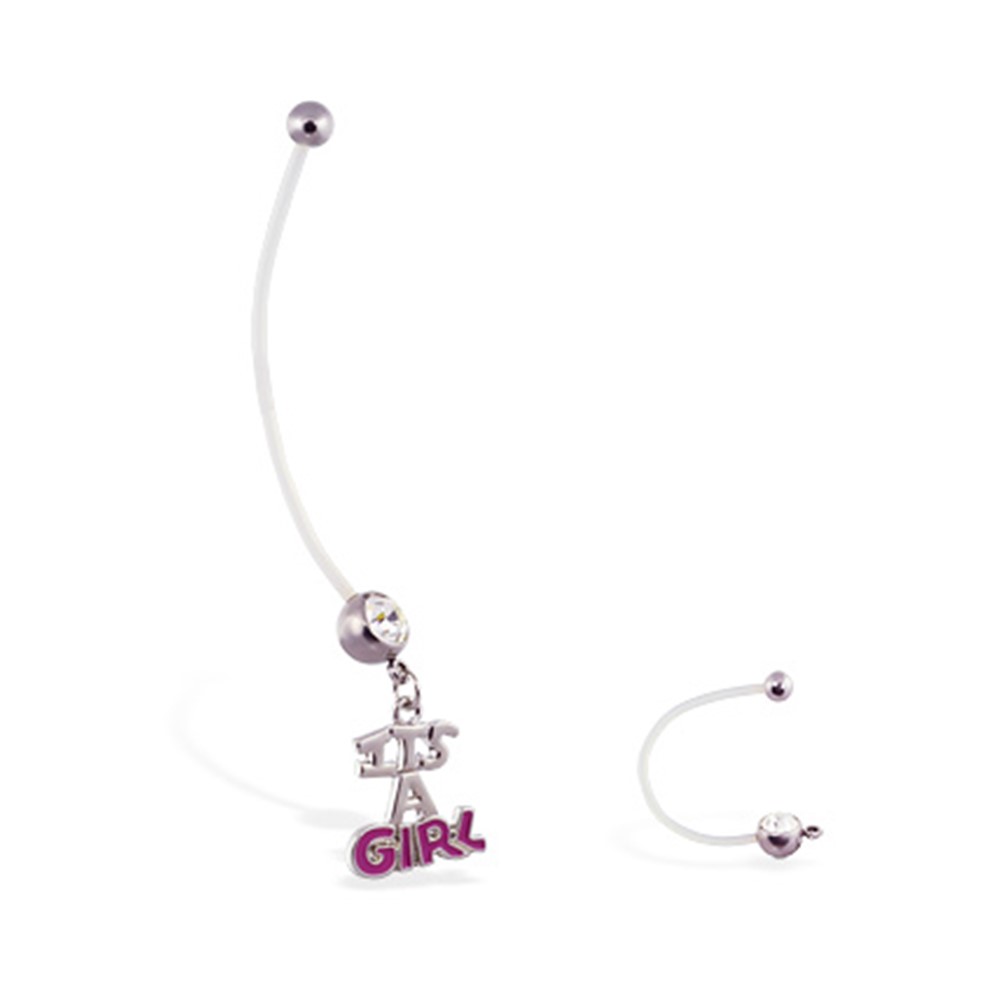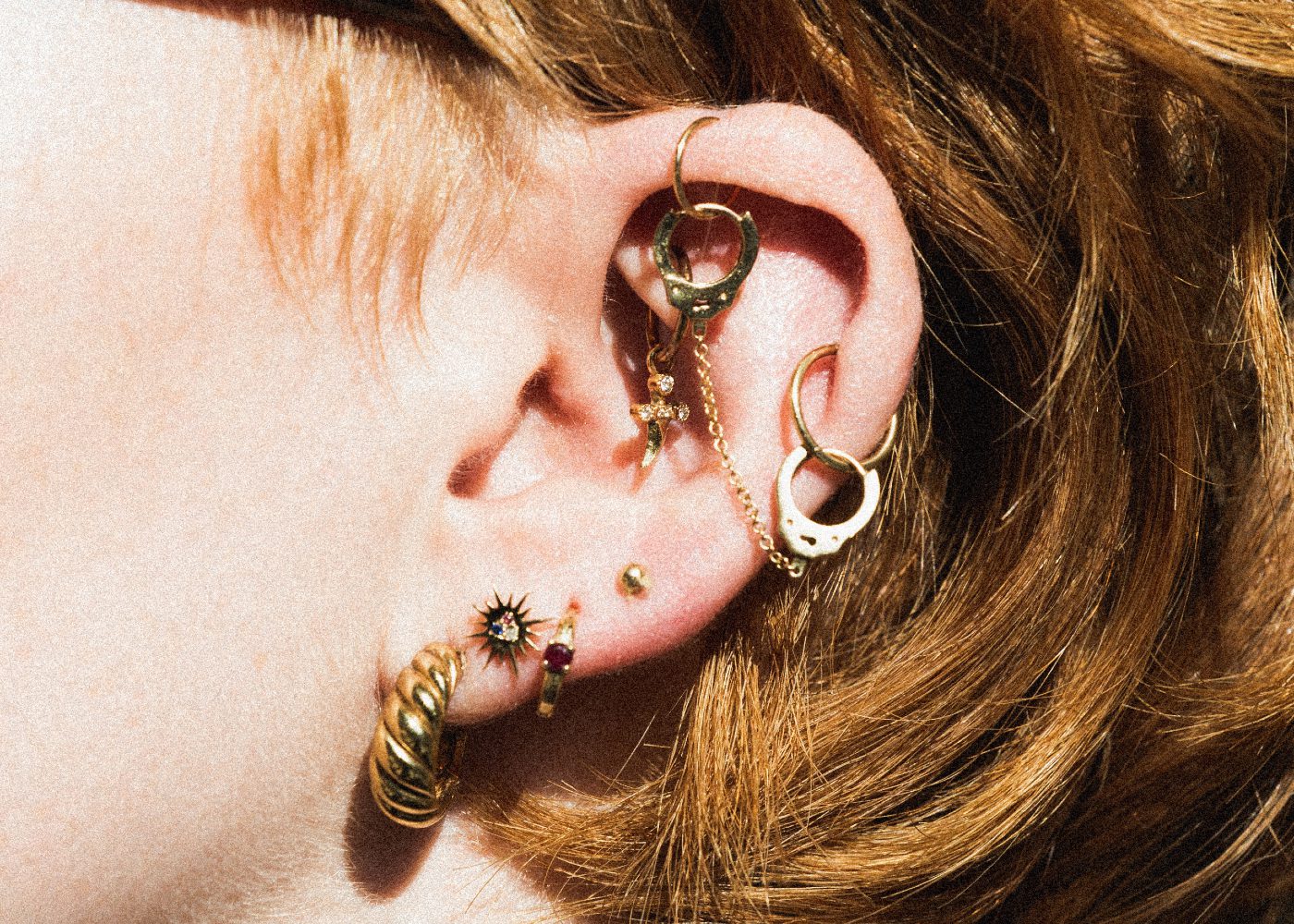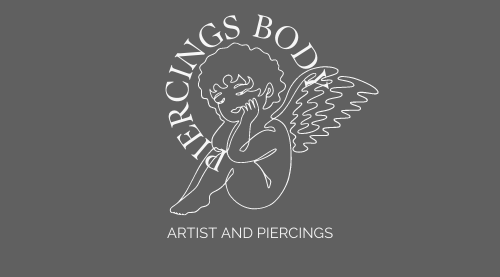Beginners Guides
Symbolism and Healing


This article delves into the symbolism and therapeutic benefits of tongue piercings, exploring the reasons behind why individuals choose to get them and what they represent. It also touches on the impact of these piercings on pain sensitivity and the potential risks of nerve damage they may pose.
Induction of trance states
Various cultures have been using tongue piercings for thousands of years. The Mayan cultures of Central America were the first to document this practice. Many East Asian cultures, including Muslim Fakirs or Sufis, have also done tongue piercings. The rituals involved the piercing of the tongue and mouth, usually for ritual or sacrifice purposes. Some Australian Aborigine tribes have also used tongue piercings, for instance, to suck out evil spirits.
Many cultures have used the piercing technique to open their mouths and tongues, from Aboriginal holy men to Mayan rituals. It has been used in East Asian Spirit Mediums.
The reason for piercings may have been to increase blood flow. It can also be traced back to Ancient Aztecs. In addition, it has been used in Muslim denominations and by some Australian Aborigine tribes. Despite the provocative nature of the practice, there is no proof that it improves sexual skills.
Aside from the piercing of the tongue, other techniques have been used to induce trance states. Music is one of these. Music can be a powerful tool for achieving altered states of consciousness. This is especially true when the context is socio-ecological. Music has been used for healing rituals in ancient times. In some indigenous cultures, soothing sounds can induce trance states.
A common trance technique is visualization. You can either use pre-recorded visualizations, or create your own. If you have a strong imagination, you will have no problem with this technique. Some examples of visualization include flying through the sky, or walking down a staircase.
Symbolism
Symbolism of tongue piercings is one of the oldest forms of adornment. Ancient cultures, such as the Mayans and the Aztecs, pierced the tongue for ritual or spiritual purposes. In the twentieth century, carnies used tongue piercings as a sideshow attraction.
The symbolism of tongue piercings can range from a simple tease to the ultimate rite of passage. Tongue piercings are usually done from the top to the bottom of the tongue. The area must be examined to ensure the best placement.
Tongue piercings are relatively simple to remove. However, it can be a challenge to clean them and maintain them. It is best to wash your mouth with a mild, gentle soap.
Some people also wear “no-see-um” beads to conceal the tongue piercing. These are flat beads that match the color of the tongue. These flat beads are worn in public places or at work.
It is important to remember that jewelry should not be swallowed. This can cause infection symptoms. If you swallow the jewelry, you might need to consult a doctor. The most obvious thing to do is wash your mouth out with warm water.
As a sign of their passage to adulthood, the ancient Mayans wore labrets on their lower lips. Hindus also have the ability to pierce various parts of their bodies. Some people pierce their tongues, noses, ears, lips, and mouth. Before the Thaipusam festival, a Hindu religious celebration, Hindus shave their heads.
Pain perception
Although it is relatively simple to have your tongue pierced, it is important to take care of it to avoid complications. If you don’t, the piercing can become infected, causing inflammation in your gums and loss of teeth. It is important to clean your tongue piercing with warm water after every meal.
It’s also important to brush your tongue with a good brush and floss regularly. It’s a good idea to avoid acidic or crunchy foods, which can irritate your tongue.
Getting a tongue piercing may also increase your risk for nerve damage. The piercing needle is inserted through the muscles and blood vessels of your tongue. This can cause swelling. This can cause swelling and pain, and even gum disease.
The most common complaint is pain, but there are a few other factors that can contribute to your pain experience. For instance, where you got your piercing can affect how much pain you feel.
You might also notice changes in your taste and speech. You may have a lisp. Your oral hygiene may need to change depending on the type of piercing. You can also use different methods to help mitigate the pain.
There are a few good aftercare products for tongue piercings, including Biotene Dry Mouth Oral Rinse, which is affordable and has a taste that won’t turn your teeth black.
Nerve damage
A tongue piercing can cause serious damage to the nerves. Some people may experience long-lasting numbness and pain. Others may experience a diminished taste sense. Other symptoms include difficulty swallowing and speech impairments.
The tongue contains many blood vessels and is a rich source of nerves. These vessels can be damaged and cause serious blood loss. Infection can also result from bacteria piercing the tongue.
In addition to bleeding, nerve damage can cause speech impediments, numbness and pain. The piercing may also cause swelling of your tongue that can block the airway. It can also cause burning sensations when you drink or eat.
The tongue contains a nerve that runs along the jaw. It is connected to the trigeminal nerve, which is the largest nerve in the head. Trigeminal nerve pain, also known as trigeminal neuralgia or severe nerve pain, is a nerve disorder. It can be treated by painkillers.
The mouth is a breeding ground for bacteria. This puts the wearer at greater risk for gum disease, tooth loss and abscesses. Some studies also link gum disease with diabetes.
Oral piercings are also a source of Hepatitis and HIV infections. The healing process leaves the mouth open to infection, which makes it easier for bacteria to enter your bloodstream.
Infections
Tongue piercings are more susceptible to infection than other types. This can cause pain and complications. It’s important to know how to prevent infections and treat them when they occur.
It is important to brush and floss regularly to keep your mouth clean and healthy. This will prevent food particles and bacteria from sticking to your teeth, which can lead to gingivitis. It will also remove any excess bacteria.
You should also avoid foods that contain acidic or spicy ingredients. This will reduce irritation. Warm compresses can be used to reduce swelling and pain.
If you notice that your tongue is swollen or green, you should seek medical attention. Swollen tongue can cause difficulty speaking and breathing. It can also make it difficult to eat. This could be a sign that your piercings are infected.
You should also avoid sharing food and utensils with others. This is especially important when it comes to oral piercings. You should also avoid kissing, as this can transfer bacteria to your mouth.
If your infection is severe, you should also take antibiotics. You should also seek immediate medical help if you experience symptoms such as fever or chills.
A good way to treat an infected tongue piercing is by using a warm compress. You can either buy one from a shop or make your own. You can also mix sea salt with warm water. This mixture can be used three to four times daily.
Healing
Whether you’re thinking about getting a tongue piercing or have already done so, it’s important to know how to heal from tongue piercings. You should follow the correct aftercare procedures to avoid serious dental problems.
Good oral hygiene can help you heal from a tongue piercing. This includes brushing your teeth twice a day. Gargle and rinse your mouth frequently.
You should also avoid spicy foods, alcohol, and smoking during the initial healing period. These foods can irritate the newly pierced skin and make it more difficult to heal.
You should also rinse your mouth with salt water several times a day to minimize swelling and reduce pain. You can either buy a salt rinse from your body piercer, or make your own. This will help to prevent jewelry irritants.
You should also avoid oral sex while your piercing is healing. This is because oral sex can irritate the area and introduce foreign bacteria.
Avoid jewelry with long bars. This can cause the tongue piercing to swell and rub against your gums, causing damage.
If you’re having trouble swallowing or talking, it’s important to contact your doctor right away. Swelling is normal, but if it lasts more than a few days, it may be an indication of an infection.
You may feel a lot of pain when you first have your tongue pierced. This pain will subside after a few days.
I’m Gillian. I love piercings and tattoos- there’s something about the way they make your body look that just makes me happy. I started this blog to share my passion for piercings and tattoos with the world and to help people who are thinking of getting their first piercing or tattoo.
I’ve been writing about piercings and tattoos for a while now on piercings-body.com. I love sharing my knowledge with others and helping people make informed decisions about their bodies.
Beginners Guides
Clitoral Hood Piercings

Deciding to get a piercing on your clitoral hood can be an exciting adventure. You have the option to choose between two main styles: horizontal or vertical. No matter which style you choose, the procedure is easy and virtually painless.
Horizontal vs Deep Clitoral Hood Piercings
Getting a genital piercing can be exciting. It can give you a sexier look and help you to claim your sexuality. If done incorrectly, piercings can be painful. It can also increase the risk of getting sexually transmitted diseases. It is important to choose the right piercing for you in order to reduce the risk.
Most genital piercings are done on the clitoris. The clitoris is a small, external portion of the vulva that provides most sexual pleasure. Two ways to puncture the clitoris are possible. It can be pierced through either the prepuce, or through the clitoral cover. Both of these methods are effective and are less painful than other piercings. Getting a piercing through the clitoral hood has also been associated with lower rates of infection.
The clitoris is a sensitive area. Incorrectly piercing the clitoris can cause nerve damage. It can also cause damage to the clitoris. This can lead to chronic nerve damage and diminished sexual function. You should never try to pierce the clitoris yourself. A piercer is the best choice if you want to pierce your clitoris. A piercer is better equipped to make sure that the piercing is done correctly. To ensure that your piercing is done correctly, you might ask a piercer for a qtip test.
A clitoral-hood piercing is the most common genital piercing. A clitoral hood is the skin on the upper part of the vulva that partially covers the external clitoris. Most women have a clitoral hood. Some people have a large outer lips that make it difficult to pierce. This may also interfere with jewelry. Using a ball closure ring is recommended for this type of piercing.
The VCH piercing is another popular type of genital-piercing. This type of piercing also goes by the name vertical clitoralhood piercing. This piercing is similar to the ear piercing, but it is performed in the hood of the clitoris. This type of piercing uses curved barbells or bead rings. This type of piercing can be more sexually stimulating than HCH. The VCH piercing is not like the HCH and will rest on your clitoris and rub against you when you move.
If you want a vertical clitoral hood piercing, make sure you use a good quality piercing jewelry. You should also clean the glans before piercing to prevent infection. A topical skin spray such as Briotech can help to cleanse the glans and allow it to heal. However, it is best not to use alcohol peroxide as it may cause yeast infections. You can also use Cetaphil to clean the area around the piercing.
While a horizontal clitoral hood piercing can be appealing, it is not functional for erotic pleasure. VCH piercings are better suited for women who want to be sexually active or have a large neck. Vertical clitoral hood piercings may also cause pain. They can also be irritating for sexual purposes.

Q-Tip Test for Clitoral Hood Piercings
A clitoral Hood piercing can enhance your sexual experience. You need to ensure that you are getting the right type of piercing. If you want to get a VCH, the Q-tip test can be a great way of ensuring you are getting the right piercing. The cotton tip is used to check for any space under the hood.
Women who want a VCH piercing will typically have a hood large enough to hold the jewelry. If you have a large pubic bump, it can cause the jewelry to become embedded. The hood also needs to be loose enough for the jewelry to be safely pierced through.
The Q-tip test can also be used to determine the depth of your clitoralhood. In this test, you’ll slide the Q-tip under your hood to see if there is space. If there isn’t enough space for the Q-tip, you don’t have a VCH piercing. If there isn’t enough space, you will need to change your jewelry.
The Q-tip test is used to determine the depth of your hood and can also help you get the most out of your piercing. Ask your piercer to test the depth of your hood. This will help you get the right size jewelry. Your piercer might be able to offer advice on choosing jewelry that will enhance your sexual experience.
You can also use the Q-tip test to determine if jewelry cleaning solutions are necessary. You should use a water-based lubricant, like Cetaphil, to help clean your piercing. Also, make sure that you use a cork to keep your needle from piercing the hood. This will reduce the risk of getting a stick and prevent the piercer from damaging the clitoris.
The Q-tip test is also the best way to tell if you’re getting a piercing that is too large for you. A VCH should have a piercing about a third the size of their hood. A piercing for jewelry should be about a quarter of the size of a circle. However, if your hood is too large you might need a smaller one.
While you’re waiting for your piercing to heal, make sure to clean the piercing frequently. After you have had sex, you may want to soak the piercing in a saline solution. You’ll also want to wash your hands before you touch your piercing. This will prevent bacteria from spreading and keep the area clean. You can use a protective layer made of latex for at least six months if you are concerned about the safety and security of your piercings.
Pain Associated with Clitoral Hood Piercings
Although it is an exciting experience, piercing can be painful. You may experience pain, swelling or bleeding depending on the type of piercing. Generally, piercings shrink quickly, so you should take care of the piercing while it’s healing.
While it’s true that piercings will usually shrink in size quickly, it’s important to remember that piercing can be more painful than you expect. This is because the area around the piercing is very sensitive. The piercing could also be in a way that can cause nerve damage. See a medical professional if you experience persistent pain after getting a piercing.
Clitoral hood piercings are the most common type of piercings. This type of piercing goes through the clitoral hood, a thin layer of skin covering the external clitoris. There are two types of clitoral hood piercings. A horizontal clitoral hood piercing is usually located on the side of the hood, while a vertical clitoral hood piercing goes through the clitoral shaft.
A vertical clitoral hood piercing has a fairly simple healing process. The piercing will usually heal in 4 to 8 weeks. It will need to be cleaned daily, as well as be kept from snagging. After the piercing is completed, you may use a topical spray such as Briotech. This helps speed up the healing process and prevent infection. For a few days, you may want to wear a panty liner. To give yourself more stimulation, you can wear jewelry. There are a variety of body piercing jewelry available for clitoral hood piercings, including barbells, captive bead rings, and navel piercing beads.
There are many options for clitoral hood (VCH) piercings, but the most popular is vertical clitoral hood piercing. This is similar to a lung piercing but is more sensitive. When you are having a VCH piercing done, it is important to choose a reputable piercer. This type of piercing could cause nerve damage around your clit so make sure you choose the right piercer.
Clit piercings can be a great way to stimulate your sex life. They are handy for those who are anorgasmic. They are also beneficial for women with a small clitoris and for those who want to improve their anorgasmia symptoms. You can also add jewelry to your clitoral stimulation piercing to increase your sexual pleasure. However, it’s important to remember that clit piercings aren’t going to give you the same level of stimulation that an ear piercing can.
Generally, most women get pierced for aesthetic reasons. However, some people also get pierced for more practical reasons. For instance, they want a piercing that can increase the level of sexual stimulation they experience during sex. Clit piercings can add a little extra stimulation, but they’re not going to provide the same level of stimulation that an ear or navel piercing can.
I’m Gillian. I love piercings and tattoos- there’s something about the way they make your body look that just makes me happy. I started this blog to share my passion for piercings and tattoos with the world and to help people who are thinking of getting their first piercing or tattoo.
I’ve been writing about piercings and tattoos for a while now on piercings-body.com. I love sharing my knowledge with others and helping people make informed decisions about their bodies.
Beginners Guides
Bioflex Nose Ring

If you’re searching for the ideal ring for special occasions or to add some extra sparkle to your daily style, there are plenty of choices to consider. Opting for a bioflex nose ring provides a durable and lightweight option that ensures comfort without causing any discomfort or harm to your face.
Open nose rings
Using Bioflex Open Nose Rings is a great alternative to more conventional nose jewellery. It is easier to fit and soften. It is also biocompatible, making it suitable for piercings. Bioflex can also be steam sterilized so there are no unpleasant surprises.
The Bioflex Open Nose ring hoop has an angled end to hold it in place. The ring is also accompanied by a small disc which sits on the inside of the nostril. The disc is supposedly the most important part of the ring, as it serves to highlight the fact that it is an open nose ring. The disc has a gap of 4mm, which allows for a secure fit.
The ring is available in Blackline, Zircon Gold, and Titanium. The Bioflex Open-Nose Ring comes in two lengths. This makes it perfect for people who need to change their nose jewellery frequently. The ring is also available in the 316L surgical stainless steel version. It is an ideal choice for those who want a change without the hassle of having to take out their piercing. This ring is also available in a septum flip style. This style is similar in that it features a spiral-type curve halfway up the stud.
The Bioflex Open Nose Roop is available in the most popular nose piercing sizes, and in the most popular metals. It can be cut to any length, making it the perfect piercing solution. The Bioflex Open Nose Ring can be steam sterilized for a clean piercing experience. The Bioflex Open Nose Ring carries a one year warranty, so you can be confident that your nose jewellery will be safe to wear.
Common uses
Bioflex nose rings are a great way of concealing a nose piercing. These plastic studs can be easily put on and are non-reactive. They are hypoallergenic and available in a variety of sizes and shapes to meet your needs. They can also speed up the healing process if your piercing has been infected.
Bioflex nose studs are also good for new nose piercers as they help to maintain the integrity of a piercing. This is especially true for bridge piercings. Migration is more common for piercings on this area of the face. This happens when the hole starts to move as it heals, which can cause bumps. Protecting your piercing against migration is possible with bioflex nose rings.
Bioflex nose studs are perfect for piercings that are taking a long time to heal. These studs are also great for nose piercings that have been infected because they will help you to hide the piercing and get it healed quickly. Bioflex nose studs can be easily cut to the length you prefer.
Bioflex nose rings come in two styles: pin up or push fit. The pin up design is great for nose piercings that are located on the bridge of the nose and the push fit design is great for nose piercings on the sides of the nose. Bioflex nose rings are also made from durable, clear, flexible materials. They are also resistant to different temperatures and are highly non-reactive. They look great on the nose.
Bioflex nose rings can also be used as retainers for piercings. These retainers can conceal your piercing and keep it clean. The backing is a flat, transparent plastic that is easy-to-apply and to remove. Bioflex nose rings are hypoallergenic and highly resistant to infection. They are lightweight and won’t get too hot outside. They are perfect for new nose piercers and they will hide your piercing perfectly. They are also available in a variety of sizes and shapes so that you can find the right stud for your nose.
I’m Gillian. I love piercings and tattoos- there’s something about the way they make your body look that just makes me happy. I started this blog to share my passion for piercings and tattoos with the world and to help people who are thinking of getting their first piercing or tattoo.
I’ve been writing about piercings and tattoos for a while now on piercings-body.com. I love sharing my knowledge with others and helping people make informed decisions about their bodies.
Beginners Guides
Super Long Flexible Bioplast Belly Ring With Dangling jeweled Baby

You have a variety of choices available to you, whether you are searching for a flexible bioplast belly band adorned with sparkling pendants or a distinctive belly button ring. You may want to consider choosing a belly ring designed specifically for expectant mothers. This type of belly ring can help keep your piercings secure as your body undergoes changes during pregnancy. Additionally, it can help prevent accidental bumps to your navel area during this time.
PTFE / Flex belly rings can be used to keep piercings during pregnancy
Flex belly rings – PTFE / Flex are a great way for you to keep your piercings in place during pregnancy. They are made of flexible polytetrafluoroethylene (PTFE). This material is safe and non-toxic. It is also nickel free, hospital grade, and flexible.
When you’re pregnant, your skin is much more sensitive. This can lead to dryness around piercings. This can also increase your risk of infection. To protect your skin, keep it moisturized. And don’t forget to clean it often with soap and water. It’s also a good idea to wear loose fitting clothes. Keep your belly button piercing clean.
You might want to consider having your belly button pierced during pregnancy if you have just had it done. This is because your womb grows rapidly, and you’ll want to avoid any injury to the skin. You can also replace your belly ring with fishing line or another flexible material.
Another option is to get a specialized flexible belly button ring. These ring can expand as your womb gets bigger. This will prevent your skin stretching. They come in a variety of colors. You can even get one with a pendant which can hold up to eight characters of your child’s name.
Ask your piercer if you are unsure if your piercing can be kept during pregnancy. You may want to consider removing your belly ring until after delivery, when your body is fully healed. Or you may want to keep your belly ring, but have your piercer cut it down to a size that fits your current belly.
Retainers made of Tygon and PTFE should be considered for your belly ring. These are very flexible and can be cut to fit your belly piercing.

PTFE / Flex belly rings are a pliable, bendable alternative to surgical steel navel rings
PTFE/Flex belly rings are a great alternative to surgical steel navel rings. They are flexible and soft, making them ideal for people with sensitive skin or allergies to metals. They make great belly rings and are perfect for pregnant women.
One of the best parts about these rings is that they are super adjustable. They are also hypoallergic, meaning they don’t have any metallic reaction to the skin. It is important to choose a ring with enough length to accommodate swelling.
PTFE / Flex belly rings are also an excellent choice for active sports. They are flexible and can move with your body for comfort. They are ideal for sports and can be worn for abdominal exercises.
There are several different types of PTFE / Flex belly rings. Some are made of a synthetic material while others are made with a biodegradable material. Others are made out of a variety different plastics. They are all safe to wear and can heal quickly.
PTFE / Flex belly ring can be used with a threading tool, and can be cut to fit the shape of your belly. This makes it a great material for navel piercings in pregnancy.
Another great advantage of PTFE / Flex belly rings is that they are designed to heal quickly. This is especially true for women who are pregnant. They can be used as a navel ring retainer during abdominal exercises. They can also be used to pierce the belly button.
PTFE / Flex belly button rings are available in many different colors and styles. They come in different grades so it is important to choose the right material.
PTFE / Flex belly rings have dermal jewelry
PTFE/Flex belly rings are a great way to keep your navel piercings in place while you are pregnant. A PTFE/Flex belly ring can reduce scarring and speed up the healing process. These belly rings are self threading so you can easily adjust the length to fit your growing belly.
PTFE/Flex belly rings are an excellent alternative to metal rings. These belly rings are made from a polytetrafluoroethylene material (PTFE) and are durable and flexible. They look great in the sun. These belly rings are available in many sizes and shapes. They can also be cut to the perfect length.
The best thing about PTFE / Flex belly rings is that they can be autoclaved to sterilize them. This makes them ideal for people who have sensitive skin. They are also durable, reusable and non-allergenic. These belly rings can also be re-pierced after delivery. They are also hypo-allergenic and the PTFE material is non-irritating. They are ideal for active sports and are a great piercing material. They are also the most secure of all piercing materials.
The best thing about PTFE is that it is a bio-compatible material. This means that your piercing will heal faster and you will likely not experience any allergic reactions. The non-stick surface of PTFE ensures that your piercing stays clean and free from bacteria. People with oral piercings will love PTFE. In addition, it can help prevent gum damage. PTFE also helps reduce the amount of lymph that builds up around the piercing.
The PTFE / Flex belly ring is the best choice for a new or existing piercing. It is flexible, durable, hypo-allergenic, and PTFE/Flex belly rings are ideal for active sports.
PTFE / Flex belly rings are a pliable, malleable alternative to surgical steel navel rings
PTFE / Flex belly rings are a malleable, flexible alternative to surgical steel navel rings. They are hypoallergic so they won’t react to your skin. They are made from polytetrafluoroethylene, also known as Teflon, which is a biologically inert material. They are often used in cosmetic reconstruction.
PTFE belly rings can also be easily cut to your desired shape. They are especially effective for tongue piercings.
There are many different types of PTFE / Flex belly rings. Some are made from Bioflex, a metal-free, biologically inert material. These belly rings can be used for almost any type of piercing. They can also reduce inflammation and healing time. They are also less abrasive that metal discs.
Pregnant women love Bioflex belly buttons rings. You can purchase them at your local piercing shop or online. These belly rings are also available in a variety of different shapes and sizes. They are a great choice for women who like to play sports.
Bioflex is also an ideal choice for people who are allergic to nickel. Many body jewelry that are cheap contain high levels of nickel. They should be tested to ensure they are safe to wear.
PTFE / Flex belly rings are also available in different designs. You can find unique belly buttons rings with quirky charms or dangling jewelry. There are also glow-in-the dark options.
Plastic rings are also a great option for people who are not allergic to metal. They are hypoallergic and can be a great option for stretched piercings. They can be adjusted to any length and won’t tarnish. They are also a great choice for swimming.
PTFE / Flex belly rings are a malleable alternative to surgical steel navel rings
PTFE / Flex belly rings are a malleable alternative to surgical steel navel rings. PTFE stands for polytetrafluoroethylene, also known as Teflon. It is a biocompatible, nonallergenic material that is often used in cosmetic reconstruction. It’s also the material of choice for navel piercings during pregnancy.
PTFE belly rings have many advantages, including a smooth and snag-free finish. They are also easy-to-clean. They can be cut to any shape and are flexible. They look great when worn in the sunlight. They are particularly effective for tongue piercings.
PTFE / Flex belly rings are the right thing for the right person at the right time. For example, a pregnant woman will want a ring that’s hypoallergenic. There are many options online. Some are even adjustable. You should shop at a reputable store for body jewelry to get the best results. If you’re on a tight budget, look for a bargain.
The best thing about the PTFE / Flex belly rings, is their hypoallergenic nature. They are also free of metal, which is great for those who are allergic to nickel. PTFE is flexible and easy to thread. Many PTFE rings come with an adjustable ring that can be adjusted to accommodate changing sizes throughout your pregnancy.
When you’re looking for the best PTFE / Flex belly rings, look for reputable companies that use the highest quality materials. They’re also the best place to compare prices. If you are looking for a low-cost navel ring, PTFE/Flex belly rings are a great option. Whether you’re looking for a simple belly button ring, or something more elaborate, you’ll find the perfect ring at a price that won’t break the bank.
I’m Gillian. I love piercings and tattoos- there’s something about the way they make your body look that just makes me happy. I started this blog to share my passion for piercings and tattoos with the world and to help people who are thinking of getting their first piercing or tattoo.
I’ve been writing about piercings and tattoos for a while now on piercings-body.com. I love sharing my knowledge with others and helping people make informed decisions about their bodies.
-

 Beginners Guides1 week ago
Beginners Guides1 week agoCan Body Piercings Cause Cancer?
-

 Beginners Guides1 week ago
Beginners Guides1 week agoHow to Clean Piercings
-

 Beginners Guides1 week ago
Beginners Guides1 week agoHow to Prevent Infection After Piercings Bruise
-

 Beginners Guides1 week ago
Beginners Guides1 week agoAre Ear Piercings Allowed in the Military?
-

 Beginners Guides3 days ago
Beginners Guides3 days agoWhat Would I Look Like With Cheek Piercings?
-

 Beginners Guides3 days ago
Beginners Guides3 days agoWhich Piercings Get Infected the Most?
-

 Beginners Guides3 days ago
Beginners Guides3 days agoClitoral Hood Piercings
-

 Beginners Guides1 week ago
Beginners Guides1 week agoTypes of Body Piercings











